How don’t waste food at home? Contrary to popular belief, it is not that difficult. Below you will find simple ideas that are proven ways to waste less food.

Food wastage is one of the key problems and challenges of the 21st century. Globally, it reaches approximately 1.3 billion tonnes each year, which is equivalent to 1/3 of the total food production. This phenomenon has extremely negative environmental, social and economic effects, which unfortunately many people are still not aware of. Below are 14 rules worth knowing to reduce food waste and protect the environment.
We waste the most valuable food from the point of view of human health and sustainable development – mainly grains, root vegetables and fruit. These three groups of products account for approx. 80% of the world’s food waste. We throw away 20-30% of the food we buy, 60% of which is suitable for consumption (it is completely safe to eat).
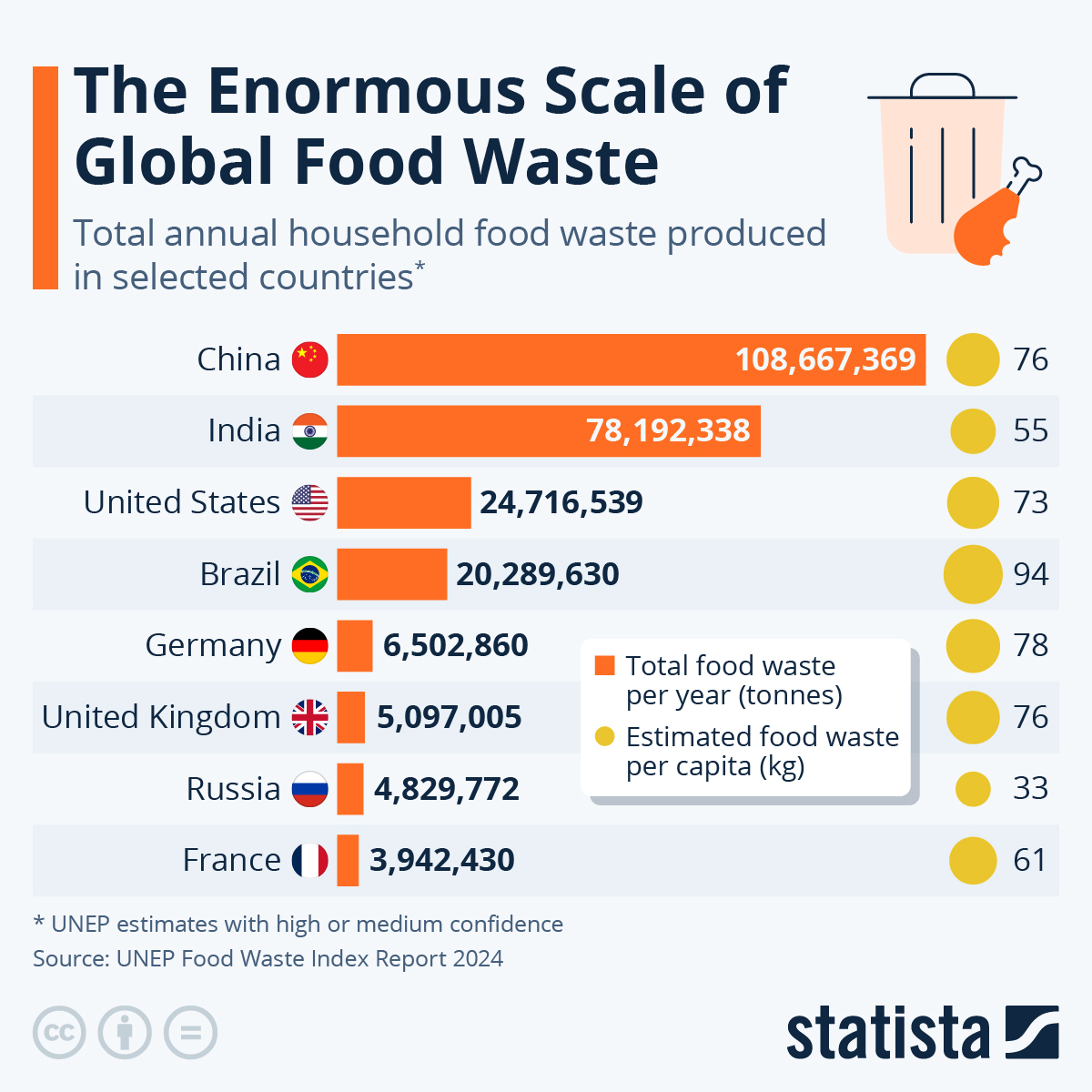 You will find more infographics at Statista
You will find more infographics at StatistaOne of the largest emitters of greenhouse gases
Waste destroys the environment by unjustifiably emitting greenhouse gases and other harmful substances when producing food that will not be eaten. The carbon footprint of wasted resources is 4.4 gigatonnes of carbon dioxide equivalent per year (including emissions from land-use change and soil use change). This means that food waste is the third-largest greenhouse gas emitter after the Chinese and US economies.
The environmental effects of food waste are also overexploitation of natural resources, including land (1.4 billion hectares of agricultural land, i.e. 28% of the world’s resources are used for the production of food that will end up in the bin) and drinking water, deforestation for food production and degradation of reservoirs due to eutrophication and overexploitation of fisheries.
The unproductive use of land, water and other resources to produce food that will not be eaten is also important for the conservation of global biodiversity. The preliminary estimate of the total cost of food waste on a global scale according to the FAO (Food and Agriculture Organization of the United Nations) is $ 2.6 trillion per year.
Scientific research has proven that in highly developed countries, the greatest wastage of food takes place at the final stages of the food chain. In the European Union countries, it is 88 million tonnes annually, including 46.5 million tonnes in households. The costs of wastage amount to EUR 143 billion per year.
5 million tons of food into the basket
The research and analysis carried out as part of the GOSPOSTRATEG project, in which the Warsaw University of Life Sciences has been participating since 2018, show that almost 4.8 million tons of food are wasted annually in Poland, of which almost 3 million tons are thrown away by consumers at home – as many as 76 kg per person. In research carried out as part of the PROM project with the participation of experts from the Institute of Human Nutrition Sciences, Warsaw University of Life Sciences, almost 42% of Poles admitted that they sometimes throw away food, mainly bread, cold cuts, vegetables and fruit, as well as milk. Surveys have shown that consumers do not know the rules for storing milk drinks. Every fifth respondent (18.8%) does not put milk in the refrigerator!
Still few people are aware of the huge consumption of water and electricity in food production. Meanwhile, to produce 1 kg of potatoes we need 300 litres of water, but to produce 1 kg of beef – 5,000 to 10,000 litres. We waste these resources by throwing away food.
How don’t waste food at home? Contrary to popular believe, it is not that difficult. Below you will find simple ideas that’s proven ways to waste less food.
1. Plan your shopping and menu

Plan your shopping and menu in advance. Regularly check your cupboards, pantry and refrigerator. Before going out for a larger shopping trip, make a list of the products you need from the menu planned for the next few days. Do not stock up on larger quantities (this is what over 60% of consumers do!), especially perishable food – cold cuts, cheese, other dairy products or ready-to-eat/reheat products.
2. Buy wisely
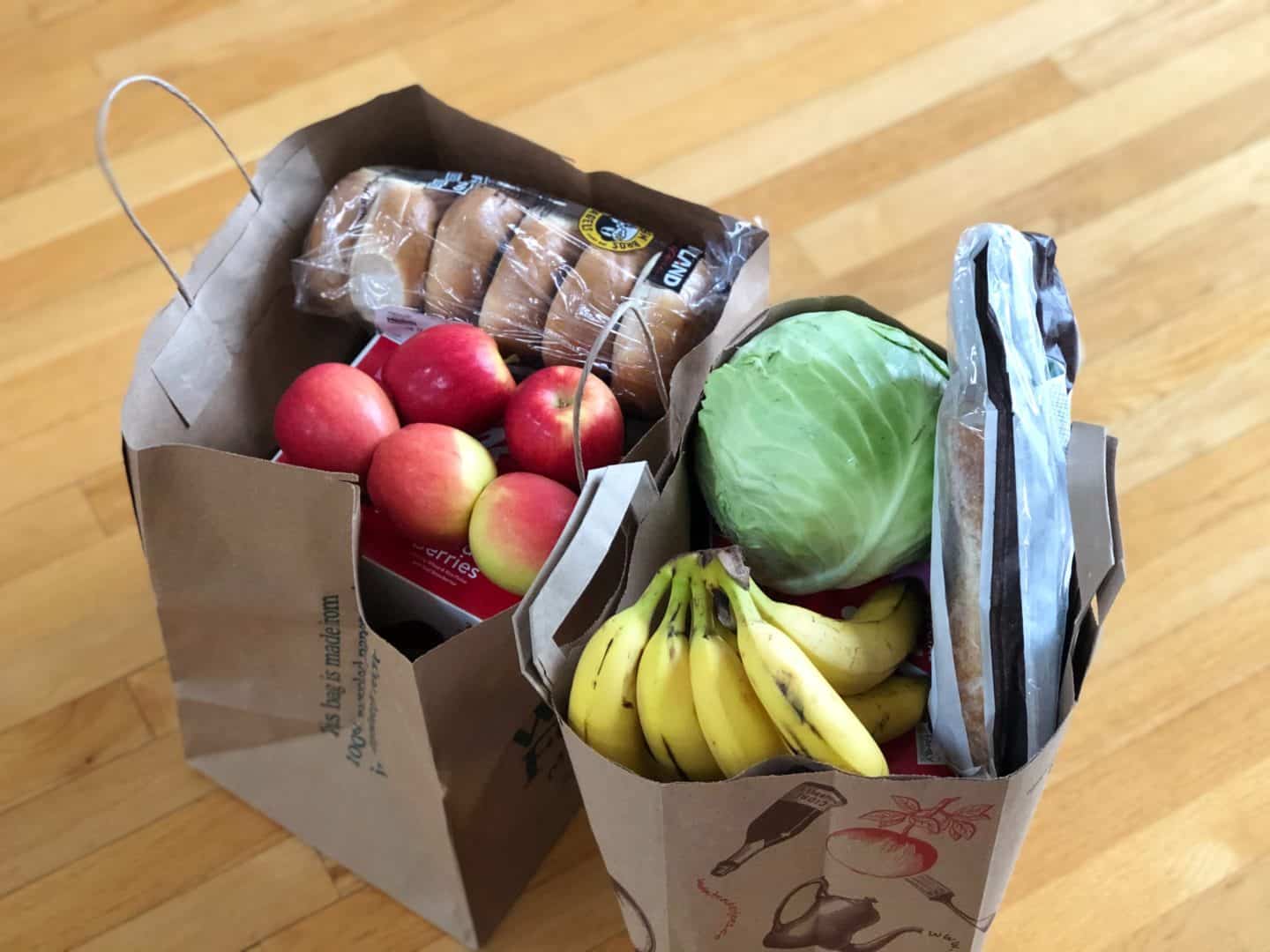
It is known from a psychological point of view that you should not shop “on an empty stomach” when you are hungry. Then we usually buy too much, and in addition many unnecessary products.
You also have to be resistant to marketing incentives such as: “three and a fourth free” or “two-pack cheaper”. At home, it often turns out that it was not needed, food spoils and will eventually be wasted, as well as the money we spent on this purchase. In stores, it is much better to follow the principle: “buy less – but of better quality”. This food retains its value for longer and does not go bad as quickly.
Buying local and seasonal products also helps to reduce food waste. By choosing food produced in the country, we also support domestic producers and limit the long-distance transport of food, which is a huge burden for the natural environment.
We should remember that small, misshapen vegetables and fruits, although they look different from what we consider “ideal”, are perfectly edible and wholesome. Research shows that consumers do not actually reach for them. Some retail chains promote the purchase of non-matured, imperfect vegetables and fruits.
3. Don’t waste food by storing your food properly
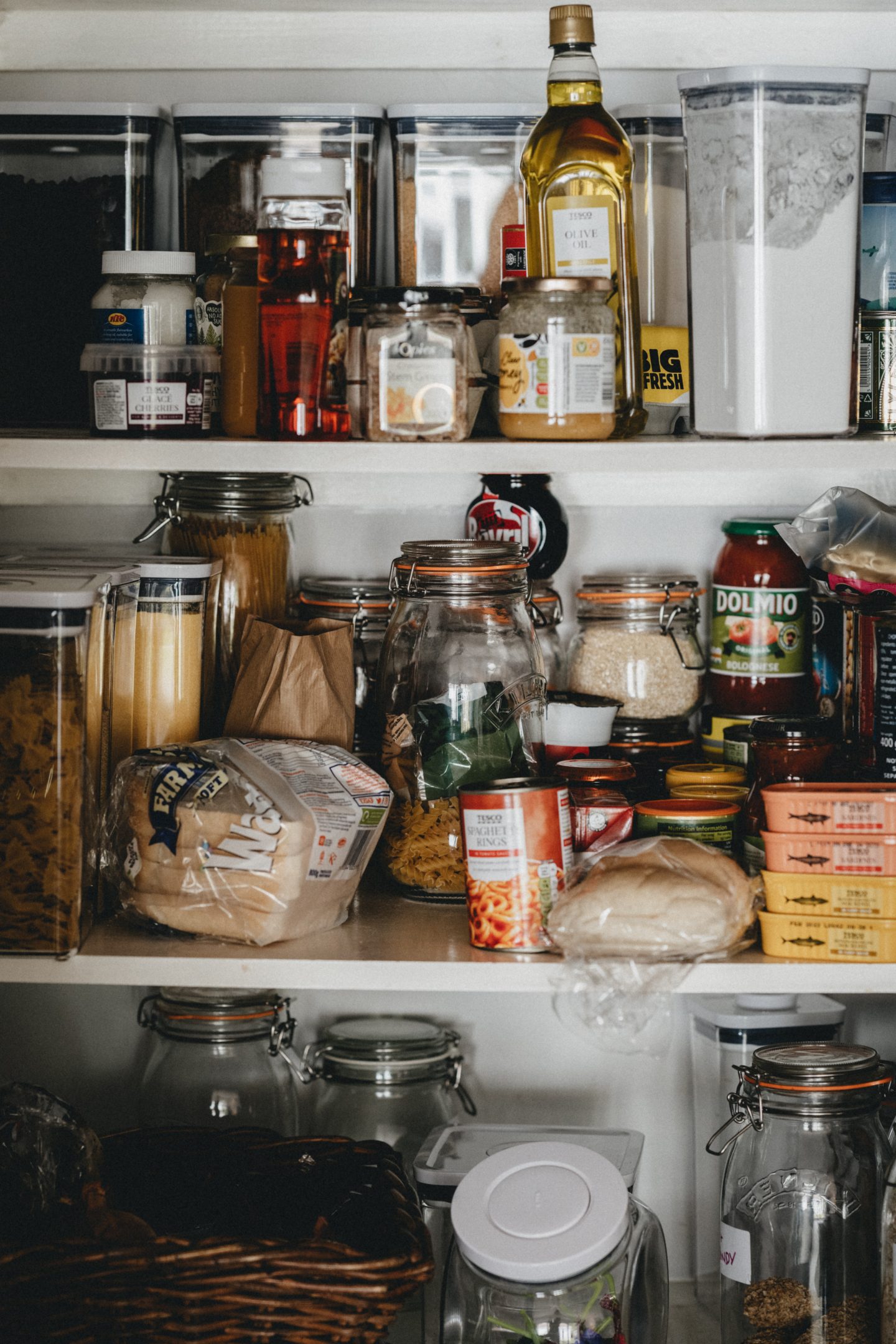
Food should be stored in accordance with the manufacturer’s recommendations. A good practice is, writing the date of refrigeration on the food packaging and the use of glass jars. There is no need to buy special containers. Minimalism is an important rule when it comes to not wasting food. Jars of jam or cucumbers will work great. Glass is the safest material for food storage. It has an additional advantage – you can see what’s inside.
Two principles are important in storing food in the refrigerator.
- The first is not to fill the refrigerator with excess food – do not place the products too tightly next to each other to ensure adequate air circulation.
- The second one is propper packaging of products so that they do not dry out (the air in the refrigerator is relatively dry). Vegetables that require refrigeration and must be in the refrigerator for a few days can be wrapped in a paper towel and secured with foil. The paper will absorb water (vegetables change colour and mature all the time) and thanks to this we will create more optimal storage conditions: dark, a little moisture and protection against drying out.
4. Use the “FIFO” principle
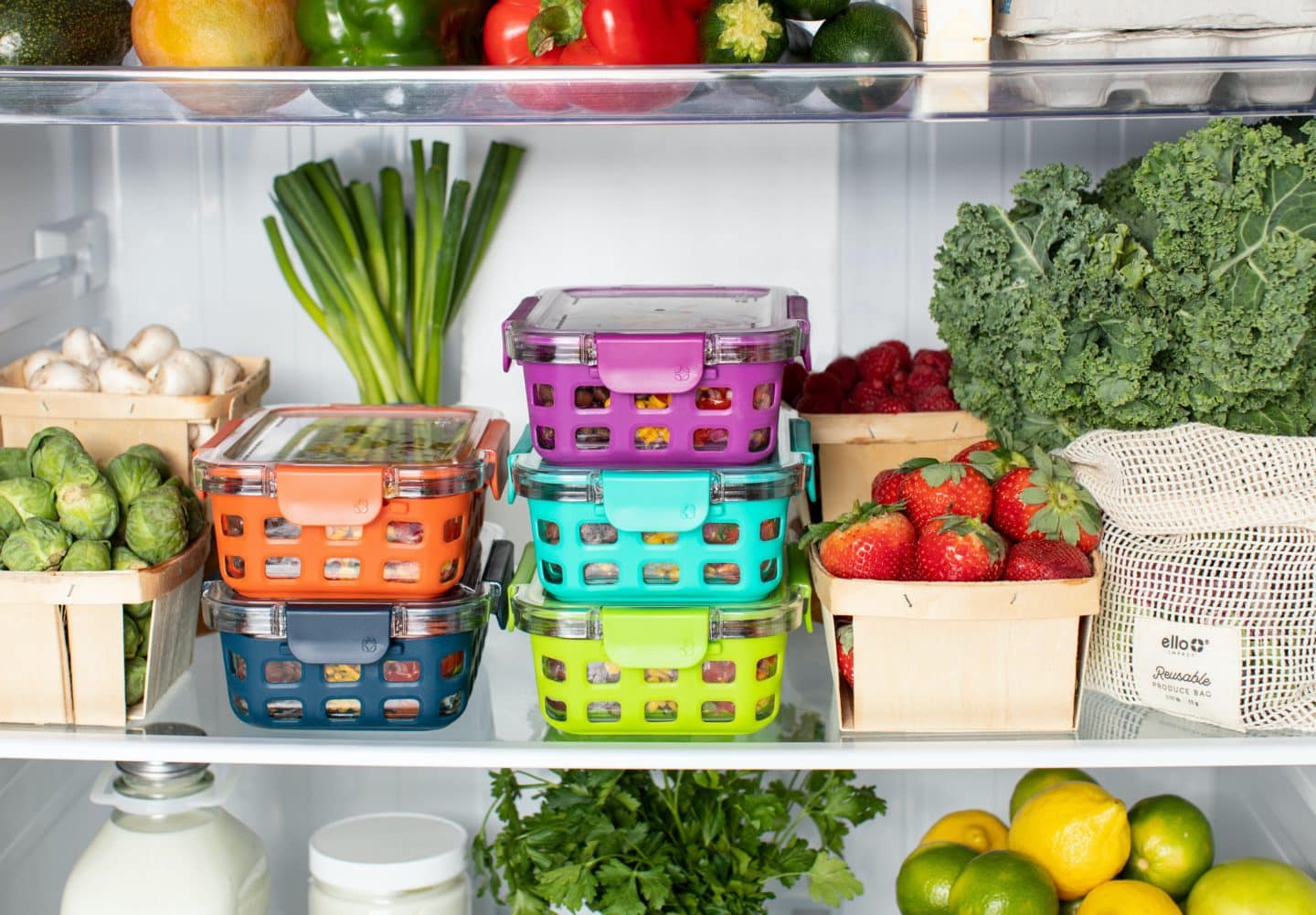
When managing your purchased food, it is best to follow the “FIFO” principle (First In, First Out), i.e. what is bought first – comes out first. This rule will ensure the proper rotation of products in the refrigerator, cupboards and pantry. It is a good practice to stick your own label with the date of purchase and an indication, such as “eat by Wednesday”.
5. Pay attention to the dates
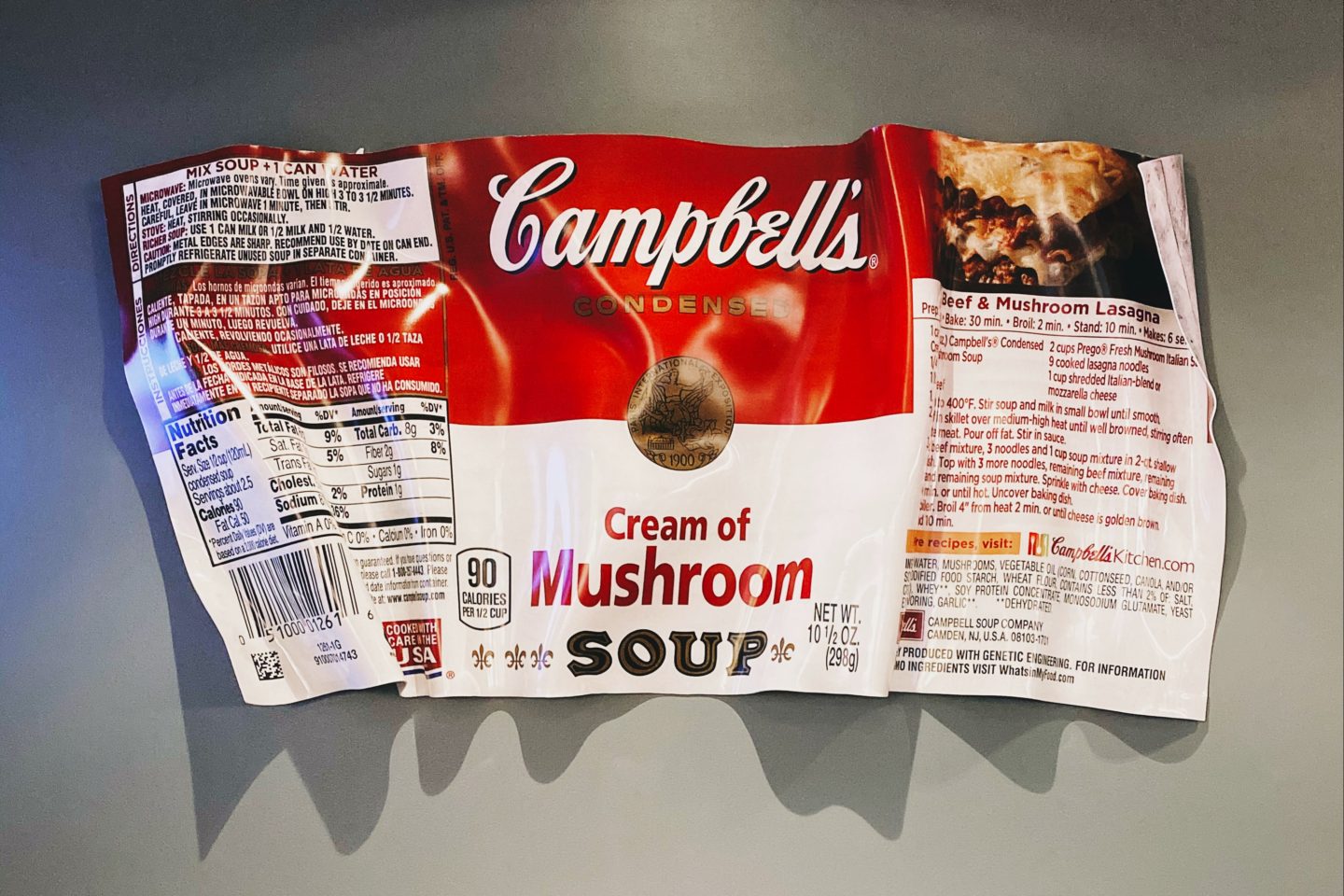
The manufacturer is obliged to put the expiry or use-by date on the packaging of each food product. It is worth emphasizing that these are two different, although similar. Most consumers are unaware of this, leading to food waste.
The expiry date (that is, in accordance with the “use by” act) is the wording: “SHOULD BE EATEN BY”. It is a date to be followed and respected. The date next to it indicates by when it is safe to consume the product. In this way, perishable products are marked, such as sausages, meat, fish, dairy products, various preparations made of animal products or non-frozen ready meals.
The use-by date (ie according to the act “date of minimum durability”) is the wording “BEST to eat before”. This is information as to when the product will retain all its properties (nutritional and taste), but what is important after that date, the product is also suitable for consumption. Durable products are marked with this date, e.g. oats, tea, mustard or jam. Research carried out at the Institute of Human Nutrition Sciences of the Warsaw University of Life Sciences, on the behaviour of products after the expiry date or the use-by date, showed that, for example, UHT milk retained all its properties for 6 months after the expiry date. This is an argument for using your own senses in addition to following the dates indicated by the manufacturer: sight, hearing, smell and taste. Thanks to them, you can assess the condition of the food in order to make the best use of it, even if it happens to be past its due date (although we should not let that happen). Of course, if any doubts the product must be discarded.
6. Don’t waste food and use leftovers
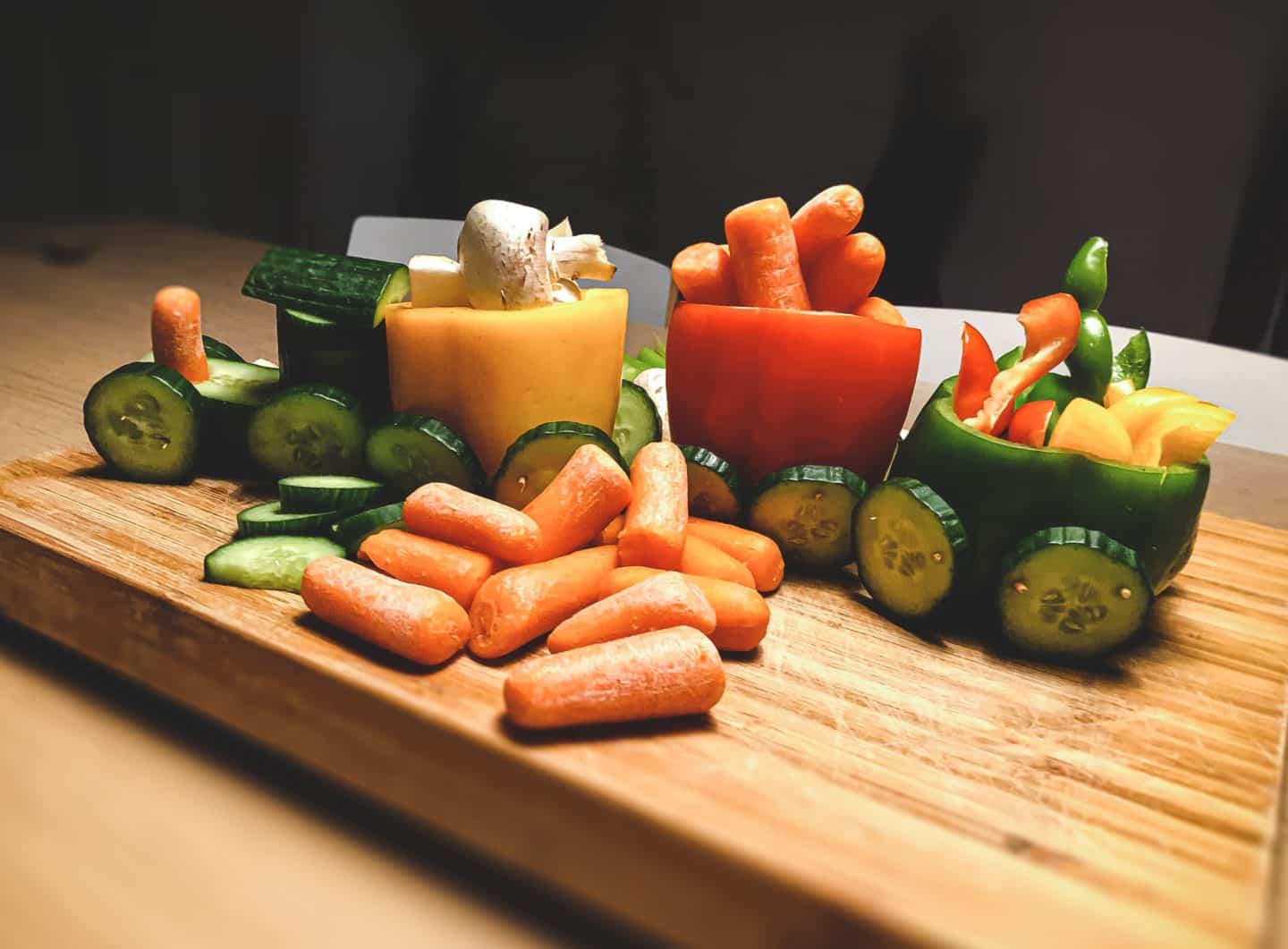
Try to use leftover products and prepare dishes. As soon as they arise, assess whether they will be eaten today, tomorrow or the day after tomorrow and store them in the refrigerator. The next day, you can serve them in the same form or prepare a different, interesting dish from them. The leftover food can also be put into the freezer right away – almost all dishes are suitable for freezing.
Let us respect bread – research shows that it is the most frequently discarded food product in Polish households. Stiff bread can be used to make casseroles, toasts or soups. You can also dry them completely and make “breadcrumbs”.
7. Check how much you spend on food

When I started to look at our home budget in more detail and wonder why, despite the good earnings and the lack of major expenses, we manage to save so little, it turned out that we are largely plunged by unreasonable expenses on food. Now, thanks to weekly menu planning and home cooking, we put aside much more, although we eat much better and healthier (and feel better). At the end of the week, our fridge is empty and ready to put in fresh products.
It took us a long time to get to this point (because we are wasteful by nature, we are sometimes lazy and chaotic). But if we’ve managed to stop wasting food, then anyone can.
8. Don’t save ON food, just DON’T waste food
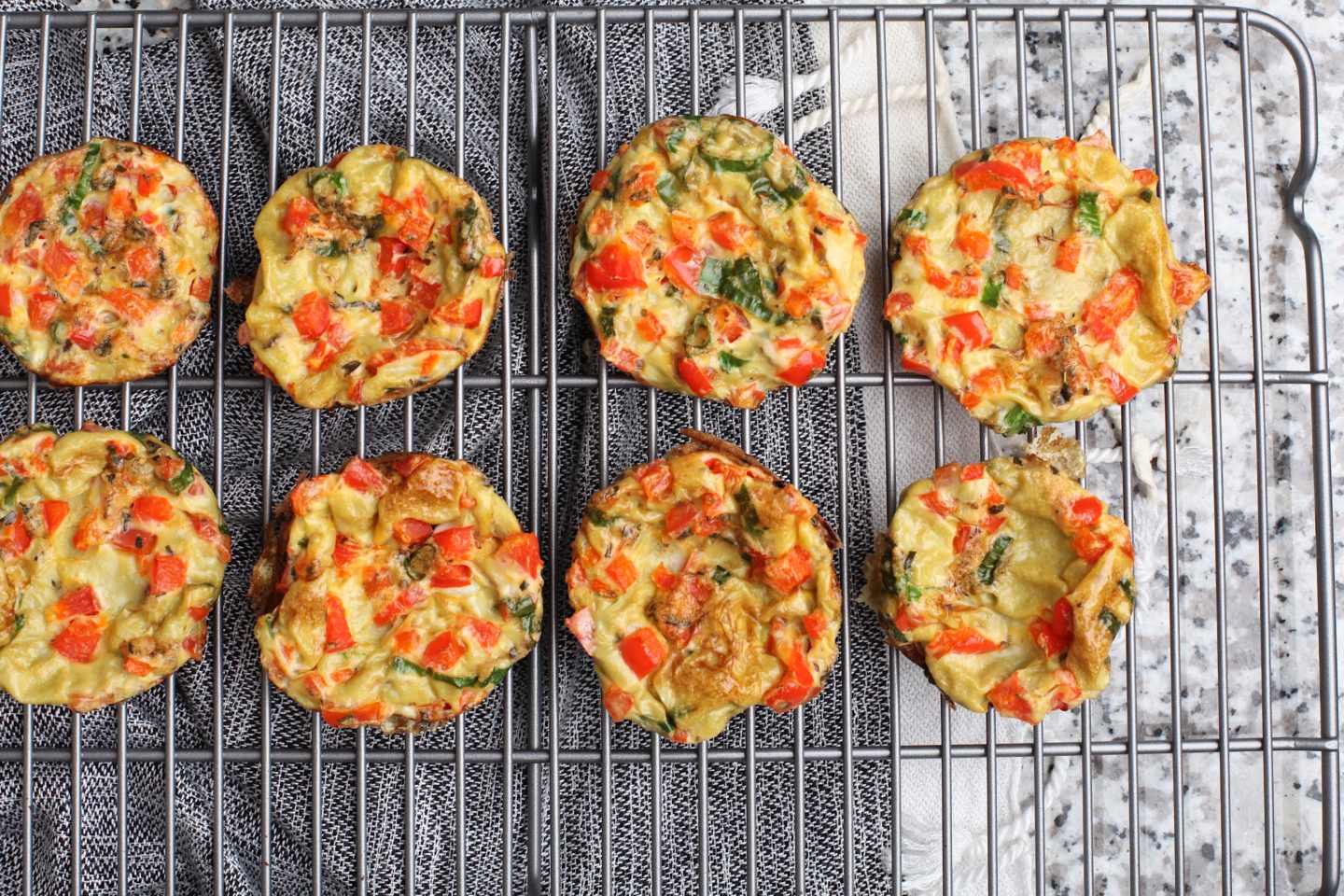
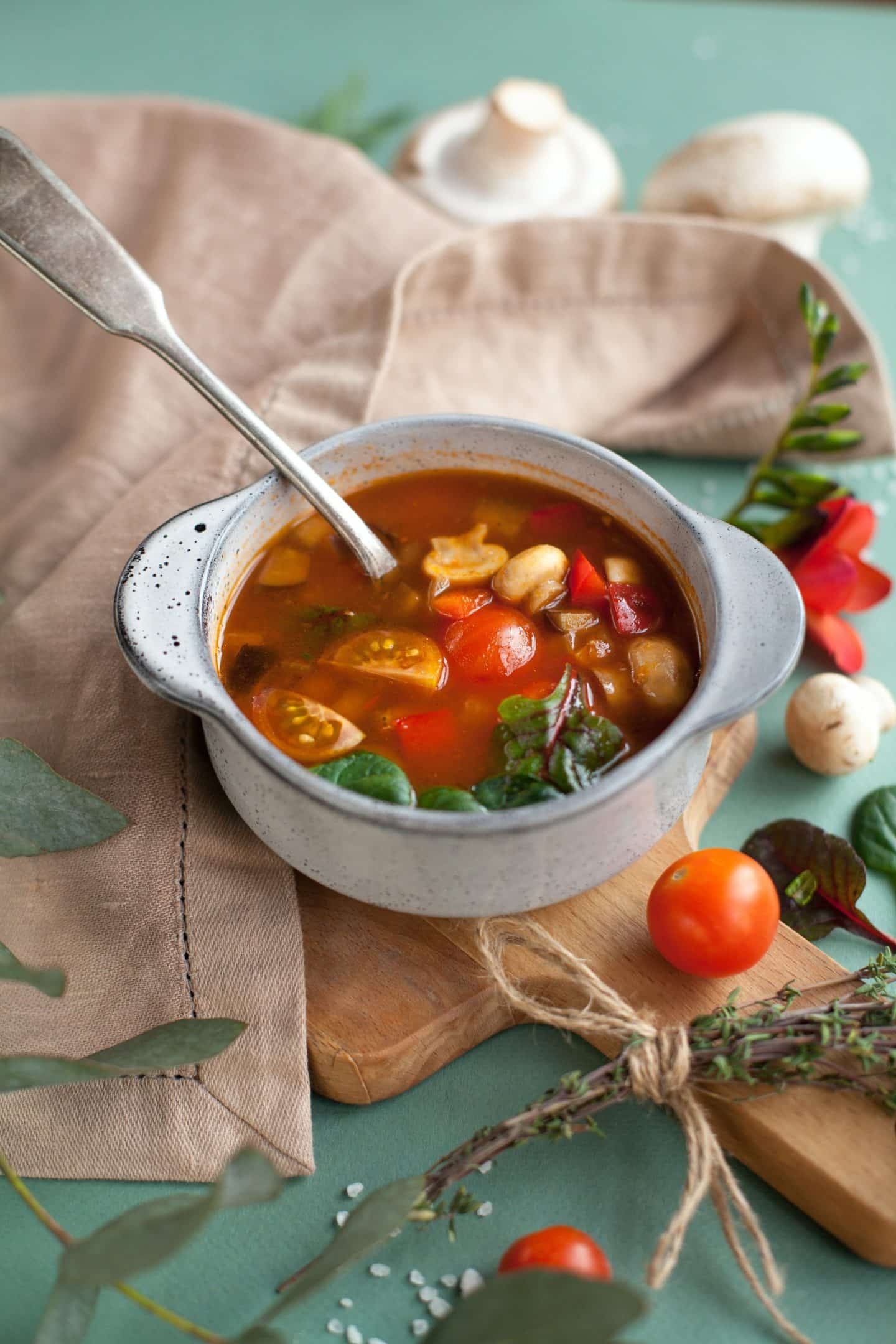
And here comes the unfortunate shop-bought sandwich diet. Eating commercial bread every day, especially at a certain age, is not good. Moreover, it is sad and boring. Instead of going the easy way and eating a sausage roll every day, use your culinary imagination and start making the most of quality food. Then it turns out that it is not that expensive.
The first step is to check the refrigerator regularly – which products are about to expire, what we have, and what you need to buy to create quality food from the ingredients that are already there.
For example, the remnants of cured meat or cheese can be put in a homemade calzone, and vegetables in muffins. Stale bread can be easily turned into French toast (perfect for breakfast) or apple pie (a dessert that no housewife will be ashamed of). Thanks to this, nothing will be wasted, and you will also gain nutritious and delicious meals.
If you lack ideas on how to use leftovers – use the help of others – for example from my blog. I quite often use leftover vegetables in wraps, soups and muffins.
Try some recipes below:
- very easy and delicious vegetable goulash
- put whatever vegetables you want in this wrap
- very easy and delicioius split-pea soup
- immunue boosting vegetable soup – one of my al time favourites
- curried soup with beans – very hearthy and warming
- using whatever vegetables you want in this omllette
9. Make sensible purchases

The best way to get leftovers is to do reasonable shopping. What does it mean? The main thing is not to buy too much. Almost all of us tend to buy too much, and it is hardly surprising. Marketing and sales specialists go out of their way to encourage us to pack the basket with products that we do not necessarily need (we buy something because it was on sale, we buy 2 for 3, etc.). Such savings are often apparent. That’s why it’s best to go shopping with a checklist!
A good shopping list is a basis for several reasons. Firstly, shopping takes much less time (we do not wander along the shopping aisles), and secondly, we spend less (with a list it is easier to curb the desire to buy, we do not buy unnecessary things, etc.). Thanks to the shopping list, you will also avoid a situation where, while cooking, it turns out that you have run out of an important ingredient, for which we often go to the nearest, not necessarily the cheapest, store. Doing planned shopping with a list and when we are not hungry – is the first step to good management of the nutritional budget, saving money and not wasting food.
10. Give up on the ready-made meals
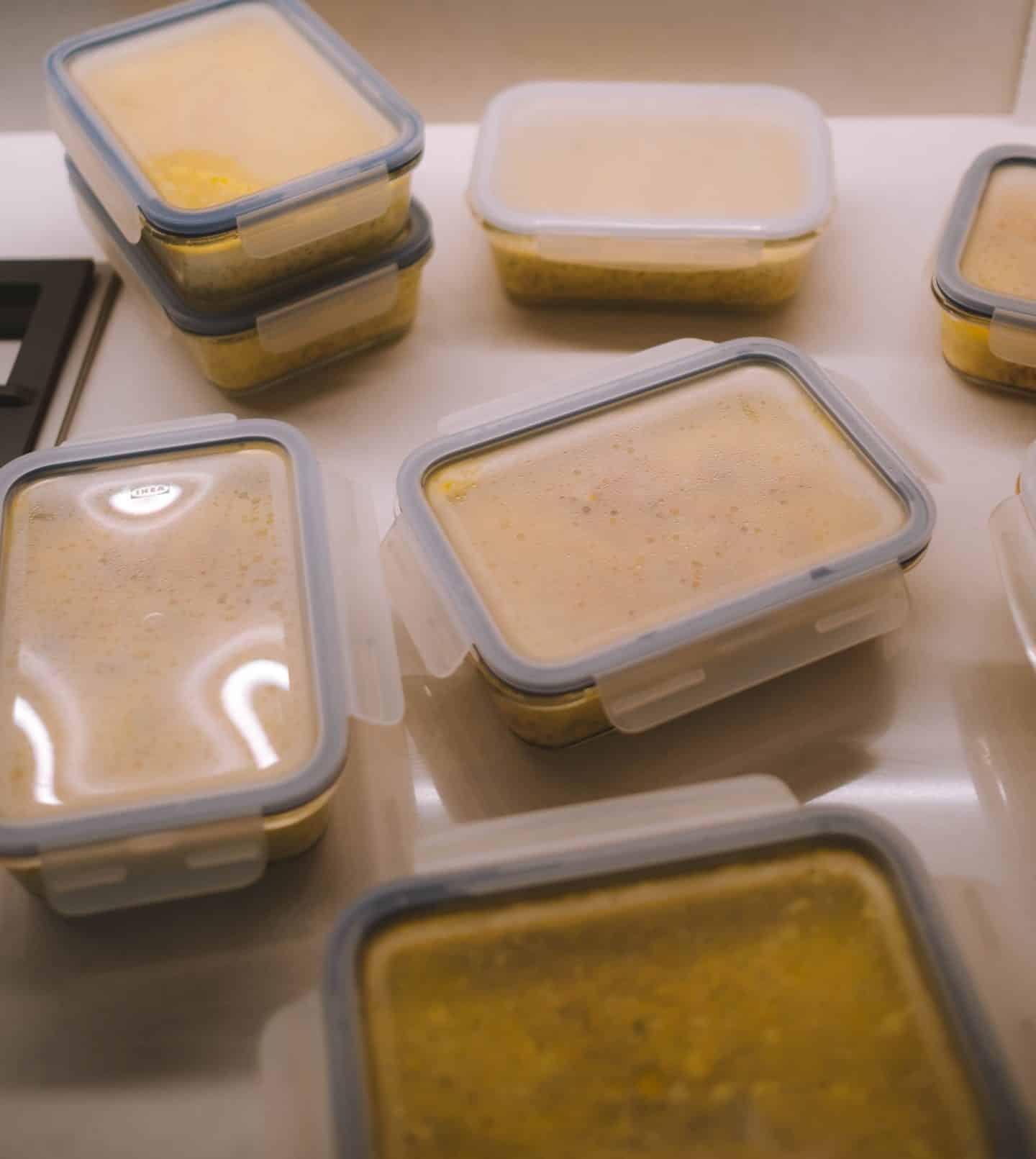
Ready-made semi-finished products from the store are full of artificial ingredients, and they are very, very expensive – compared to their homemade counterparts. Four ready-made tortilla pancakes cost as much as 7 Euro, while the same number of homemade tortillas costs around 3 ? Even if we take into account the cost of energy for baking pancakes (it’s a matter of a few minutes of baking in a pan) when buying them, we still overpay several times. If you are not convinced by the financial argument, look at the composition of the pies … The ones from the store will be full of artificial ingredients and they contain ingredients that we would rather not eat, such as fructose-glucose syrup, modified corn starch and a thickener – guar gum and acidity regulator.
Besides the price, the homemade meals taste sooo much better than the shop-bought if you ask me 😜
11. Don’t waste food and freeze any leftovers
Freezing home dinners is the best way to eat healthy and spend as little time as possible in the kitchen and don’t waste food. You can put almost everything in the freezer, and when you take it out, it will taste as good as when it is cooked. Of course, on the condition that we freeze and thaw the food well.
When I cook soups, stews, curries, I always make a bigger batch and freeze some for usage in the coming weeks. Sometimes I serve the same dinner in the week but change up some ingredients just to make it more interesting. One day I will serve the same dinner with potatoes and another day I will serve it with rice. I would always rotate different veggies too. This is I feel like I am always eating something new😁Try it for yourself and it will save you a lot of time in the kitchen too😜.
12. Limit eating in restaurants

Once you start planning your meals, there will be no room for daily lunch in pubs and take-out lunches. They will be replaced by much healthier and cheaper homemade dinners. Thus, the savings (and large ones) will come by themselves. If you like visiting restaurants, nothing is lost. You can spend the money saved on a trip to a really good place once in a while.
Conclusion
There are endless ways you can reduce, reuse and recycle your food waste. and we all should aim to do more.
I hope that the practical tips in this post will help you waste less food and hopefully may save you money and time too!
By thinking more about the food your household wastes every day, you can help create positive change to the environment and help to conserve some of the earth’s most valuable resources. Even minimal changes like the way you shop weekly or how you cook and consume food will help reduce food waste. It doesn’t have to be difficult- one small step at a time!


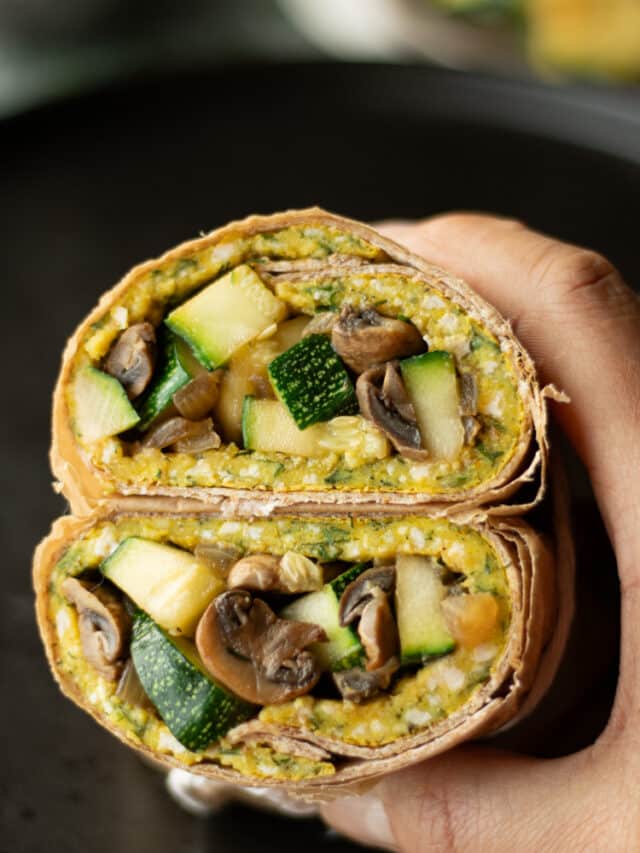

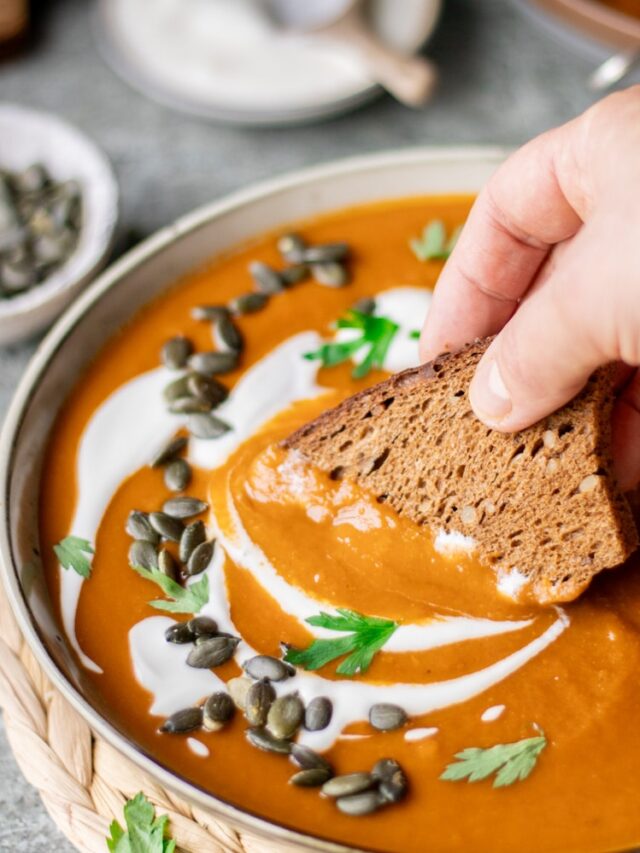

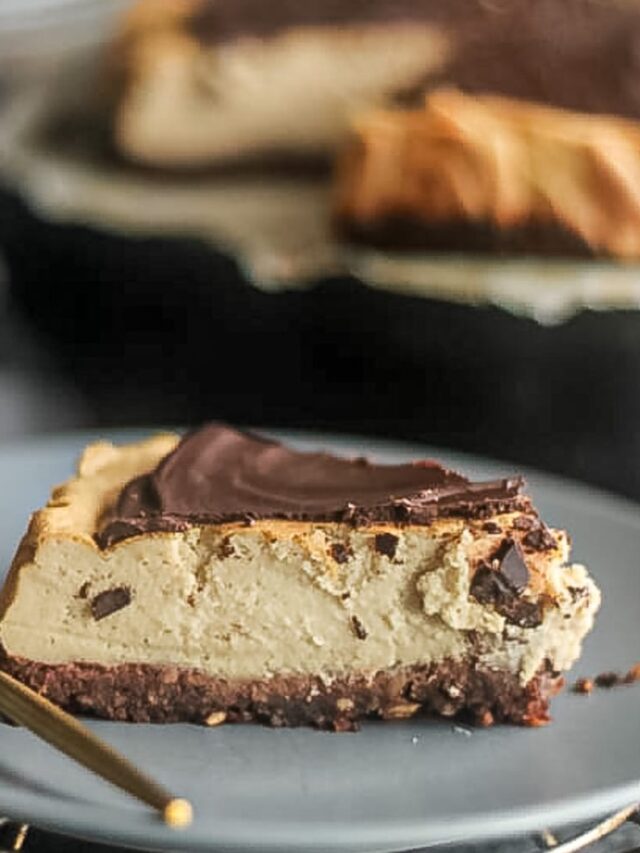

Wow, looking at these numbers make me dizzy. These are crazy amounts of food wastage.
Excellent tips. We can all do better!
Author
yes unfortunately those are real numbers. WE CAN ALL DO BETTER agreed 🙂
Wow, what a comprehensive post! Thank you for the effort and time in writing. I’m a little surprise at the stats – that China and India are at the top of the list of food waste. I like to think Asians, being one myself are very thrifty people and less likely to be as wasteful. I’m biased, of course. 😀. I’m proud to say that I waste very little food. Having an Instant Pot helped alot. Leftovers are thrown in for soups and stews or into the freezer.
Author
thank you very much 🙂 I am delighted you are contributing to waste less food 🙂 I love my instant pot too 🙂
I am one who hates to waste food! I alway make large amounts of certain foods, lasagna, spaghetti and meatballs, eggplant and chili to name a few. I make meal prep containers with the leftovers and have quick and easy meals when in a rush.
Author
You are fantastic for doing all that! That reduces so much waste 🙂
This is a very good post. Is to much waste on everything these days…your tips are very clear and easy to implement. Great work!
Author
thank you 🙂
This is awesome information! Thanks for sharing it. I had no idea the problem was this bad. But ideas and suggestions are great ways to solve it in our own lives.
Author
Thank you for reading this guide 🙂
Great tips for being mindful of food purchases and storing options. Another way to keep food out of the landfills is by composting or vermicomposting. For those who don’t compost themselves, there is ShareWaste. ShareWaste is an online community where individuals can work together to help keep food out of the landfills.
Author
thank you! GREAT TIP! I compost myself but I will look into the sharewaste 🙂
Food waste is highly preventable .I try my best to buy smart and cook in ways that I can finish it.Great tips
Author
thank you 🙂 I am glad you are doing your best to waste less 🙂
Excellent ideas for food conservation. The ones I like best are not to “GIVE UP ON THE READY-MADE MEALS” and “DON’T SAVE ON FOOD, JUST DON’T WASTE IT.” Preparing and eating high quality plant-based foods increases the nutritional value and if we are wise shoppers cuts down on food waste big-time.
Author
thank you 🙂
Making a meal plan according to what I have in the kitchen already definitely helps my family and I to not waste money.
Author
yes it saves me good bit of money 🙂
These are great tips on how to not waste food. I hate wasting food, so we use a lot of these ideas already – meal planning, freezer meals, eating leftovers, and so on.
Author
thank you 🙂
Author
thank you 🙂
Wasting food at home drives me crazy! I do what I can to make sure we have a little waste as possible. I freeze everything (as my son says). I also organize by date both in the cabinet and freezer. Usually have a list of what is in the freezer for when things get mixed up so that I know what needs to come out next. Thank you for this list as I know there is more we can do.
Author
wow you are doing an awesome job! Thank you x
These are such great tips! I hate wasting food for so many reasons, detrimental to the environment & my bank account 😅. Funny enough I hadn’t heard of the FIFO method but I already practice that at home. I also like to organize my fridge/pantry in that same way so that I grab what will expire first.
I also love to make what I call “Leftover Soup” where I basically throw everything in the fridge that isn’t going to be eaten & turn it into some type or soup/stew.
These are such great tips. Thanks for sharing.
Author
yes to the “Leftover soup” LOVE IT x
These are excellent tips! I absolutely hate wasting food. I love to plan meals around using everything that I buy, sometimes in creative ways. Thanks for sharing.
Author
thank you 🙂
Like Lily, I am surprised to see India and China on the top of the list..
I grew up knowing how to ensure nothing is wasted (be it food or clothes or just about anything else) and to ensure we use everything to the fullest we can
And found myself awed with the statistics, and nodding in agreement at your tips